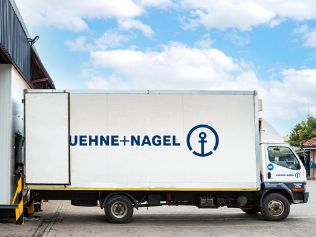The inexorable march towards e-commerce means that any business set on acquiring new customers or keeping hold of those they already have must fulfil orders quickly and efficiently. Fully functioning digital sales channels, where customers are offered multiple contact points, are therefore absolute prerequisites for successful trading. This seamless omnichannel customer interaction— using a combination of website, store and third-party platforms - is fast becoming the preferred practice of many businesses
Product selection is the engine of growth
At the heart of omnichannel shopping is convenience for the consumer: Buying an item through the online channel, with the possibility of returning it to a different channel, to a store, for example; or choosing an item in-store and having it delivered, are good examples of how businesses are attempting to remove logistical buying objections.
Supply chain and systems design need to be configured to enable this shopping experience and balance value for money, delivery speed, and service quality.
Convenience, however, is not the only consideration when it comes to online shopping.
According to research by Deloitte, on average, 49% of shoppers abandon their shopping cart when they discover extra costs such as shipping, taxes, and other fees at checkout (1). Deloitte also found that 85% of consumers prefer free shipping over fast shipping (2).
This research shows that businesses must strike the right balance between delivering the customer experience (having the right product available in the right channel) and cost. Sales are driven by consumers looking for and finding the ideal combination for their needs. Retailers are driven by balancing supply chain considerations, including where and how much inventory to hold, last-mile delivery cost and delivery times. But also including sustainability considerations, such as reducing complexities of last-mile delivery by grouping deliveries for example or initiatives to offset carbon footprint.
Competitive advantage can be achieved with the right balance: customers get a better, more sustainable shopping experience, and costs are kept in check. In contrast, an imbalance will mean missed sales, unhappy customers, risk to brand reputation plus also higher costs; longer delivery times; and obsolete inventory. All of which impact short-term revenue performance and future growth opportunities.
A customer service balancing act
Central to meeting consumers' value, service and sustainability expectations is a stable and responsive logistics framework which offers data visibility at a granular level. Brands with the right capabilities and networks in place have a competitive advantage to thrive and survive.
From the factory gate to the consumer, supply chain managers rely on network data that shows them the type, volume, and value of goods and where they are in the supply chain at any given time. Precise and accurate data enables them to track, react to, and exploit emerging sales trends across their markets, quantifying and factoring in the availability and cost of inbound transportation and last-mile delivery.
Imagine a consumer goods retailer selling across multiple European markets —from the north to the south of the continent. The retailer will need to consider seasonal, cultural, holiday and economic differences across the regions and have the right inventory available in the right place at the right time. Having a clear view of what products are in each warehouse, what's in transit, which container it's in, and when it is due to arrive means the e-commerce site can accurately inform customers on the status of their order, thereby managing their expectations.
Sustainability and customers choice
A brand's sustainability credentials are increasingly influencing consumer choices (3). Consumers are opting to support brands that source and manufacture responsibly and locally. Therefore, looking at the supply chain end-to-end for carbon reduction opportunities will continue to be an ongoing objective of e-commerce businesses.
We know that consumers want to be in the driving seat when selecting products, delivery options and costs. They are also now engaging with sustainability choices through services such as Amazon Day Delivery (4), where customers are offered the option to group shipments arriving on a nominated day, thereby reducing the carbon footprint during the "last mile" delivery.
Key takeaways – A vital balancing act
The e-commerce shopper expects a wide range of products combined with a flexible range of delivery costs and fulfilment speeds. Because of this, the supply chain machinery has emerged as a finely tuned and sophisticated operation, one that is capable of giving customers exactly what they want and when and how they want it. Many companies have successfully adapted to this evolving consumer landscape and are reaping the rewards.
Working with a knowledgeable, well-resourced e-commerce supply chain partner creates the best opportunities to balance cost, service and sustainability across multiple locations. Fast-moving e-commerce businesses typically devolve these functions to third parties who can offer everything from IT, operations, shipping and systems know-how. Working collaboratively with a strong supply chain partner enables e-tailers to react to rapid change and develop clear strategies for implementing measures to offset the carbon footprint of getting goods to customers in a fast-moving, interlinked global economy.
Our team can provide even more insight and solutions to manage intricate and competitive e-commerce fulfilment options. Contact us to arrange a discussion.
References:
- https://www.shopify.co.uk/blog/shopping-cart-abandonment
- https://www2.deloitte.com/us/en/pages/about-deloitte/articles/press-releases/deloitte-study-holiday-shoppers-hooked-on-fast-and-free-shipping.html
- https://www2.deloitte.com/uk/en/pages/consumer-business/articles/sustainable-consumer-2020.html
- https://www.amazon.com/gp/help/customer/display.html?nodeId=G726UBZLXYFD6ND8



.jpg/fedef584-a960-4d59-1d7c-341c5df2f8c1)

.jpg/aa094022-53f5-ca99-170b-8c5ad99e9cea)
.png/882d10c2-df99-cd0c-f5fd-045cb52f1a7f)



